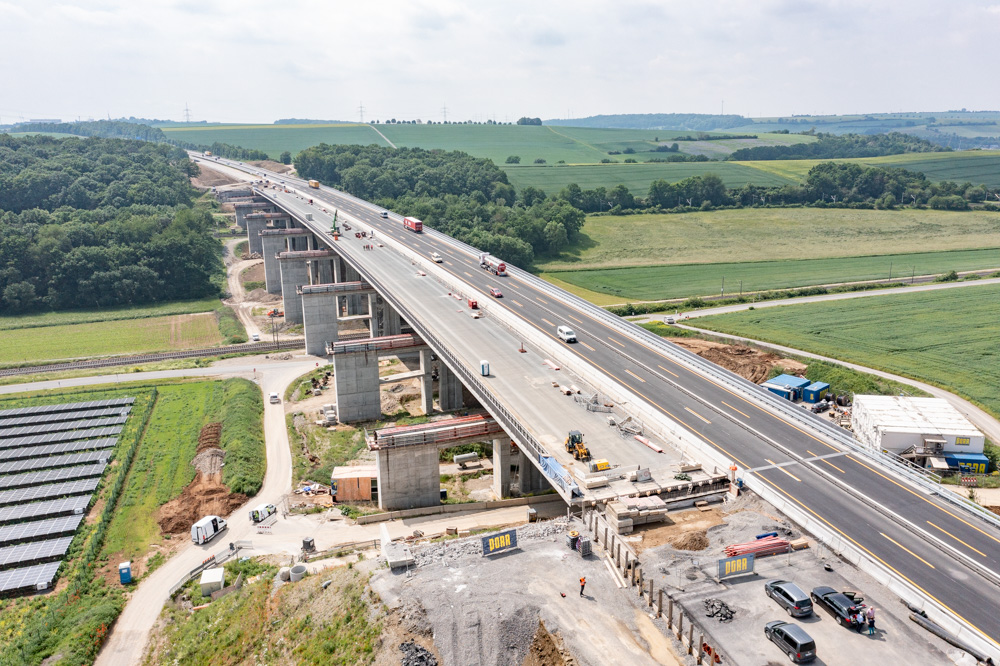Replacement construction of the viaduct completed safely and on time
The Rothof viaduct had to be refurbished because the existing construction was defective and could no longer support the current traffic load. The bridge was to be replaced with a new construction while the BAB 7 was widened to six lanes. The assignment given to PORR Civil Engineering included manufacturing the necessary substructures and a superstructure for each lane. The superstructures are each 410 metres long, are divided into two abutment axes and seven pillar axes, and were produced using an incremental launch method over 15 segments. The foundation of the new structure was created on large bored piles (d=1.50m) with lengths of up to 22 metres.
Safe lateral shifting of the bridge: a team effort with precise planning and execution
The superstructure of the lane toward Fulda, which had been temporarily moved to an alternative position, was slid into its final position on 8–9 June. The bridge was laterally displaced in all bearing axes on special sliding bearings. The thrusting forces required for the lateral shift were introduced via the pillar axes. The superstructure toward Fulda was displaced over a distance of 19.75 metres with a weight of around 17,760 tonnes. Displacement bearings were positioned on a displacement slide and used on all nine axes of the superstructure. To that end, the Teflon plates attached on the underside of the displacement slide served as a point of contact for the epoxy resin on the displacement tracks. To set the bridge into motion, strand jacks were attached to the pulling devices. After the strands were stretched, the superstructure was shifted successively over the displacement tracks, up to the height of the pillars toward Fulda, and then into its final position. As a final step, the displacement bearings were replaced by the final bearings. The on-site team eagerly anticipated the day of the bridge displacement, a task requiring great concentration, and mastered the lateral shift in an outstanding example of safe teamwork.
